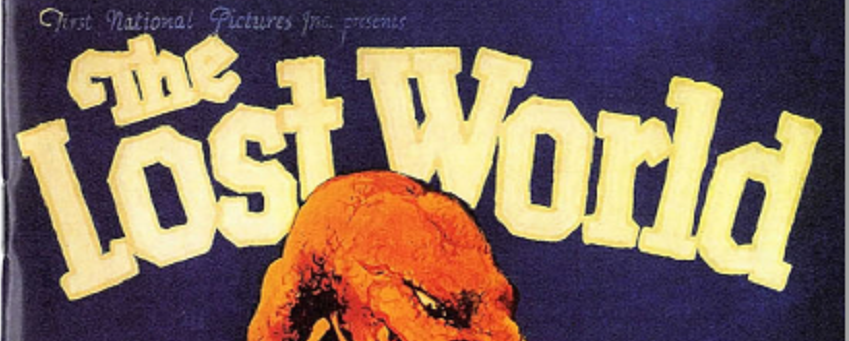Classic film blogger Aurora (@CitizenScreen) reveals the history behind the preservation and reconstruction of The Lost World (1925). The excerpt below originally appeared on the Once Upon a Screen blog as part of the For the Love of Film: The Film Preservation Blogathon.
Not having seen The Lost World for quite some time I often credit the masterful King Kong (1933), one of my all-time favorite movies, with setting the stage for the many monster movies that followed. It’s common knowledge, for instance, that the stop-motion animation used in Kong influenced the great Ray Harryhausen whose work remains a landmark in the history of dimensional stop-motion animation. But it was the work of Willis O’Brien the stop-motion animation pioneer who was responsible for Kong’s majesty. O’Brien and Harryhausen worked together years later on Ernest B. Schoedsack’s Mighty Joe Young (1949) and the stop-motion torch was officially passed.

O’Brien working on a model for The Lost World
As impressive a work as King Kong remains it was his work in the landmark 1925 film The Lost World that set Willis O’Brien apart. Not only does Kong owe the animation and much of its story to this silent predecessor, but the film’s legacy extends to Godzilla, Jurassic Park (1993) and their respective prequels and sequels. Although it is largely forgotten today The Lost World must be recognized as a major milestone in the history of cinematic special effects and its legacy duly noted. Thanks to the film preservation efforts of George Eastman House and individuals the world over we have this groundbreaking film to enjoy today – almost in its entirety.

Inhabitants of The Lost World
For decades The Lost World could be seen only in an abridged version of about an hour in length, which is what I remember seeing of the film prior to viewing the edition available from the Blackhawk Films Collection presented by Flicker Alley as part of its Manufactured-On-Demand (MOD) DVDs. This version, which is a rerelease of what was the 2001 Image Entertainment version of The Lost World includes portions of eight prints making it the most complete reconstruction of the original work possible. How The Lost World came to be lost makes for quite an interesting story. Here’s an abridged version:
Upon its original, 1925 release The Lost World was a ten-reel, almost 108-minute movie. The movie made the circuit at that length until 1929 when the widow of the film’s producer who held the rights to the story entered into an agreement with the film’s distributor, First National, to withdraw The Lost World from circulation. At that time all known positive prints and negatives were destroyed with only a five-reel, abridged version of the movie approved for distribution to schools, churches, etc. That edited, 35mm negative used to create subsequent 16mm negatives survived and ended up at George Eastman House in the 1950s. Through the years the original trailer and 35mm excerpts of the movie were found and held at the Library of Congress and with private collectors, which combined with the original, abridged version represented the most complete 35mm print of The Lost World known to exist. (Silent Era) This compilation of the movie also included animation outtakes by Willis O’Brien, which are included in the Flicker Alley rerelease.
In any case – fast forward to 1992 and the news that a nearly complete 35mm print of The Lost World was being held at the Filmovy Archiv in Prague, Czechoslovakia. George Eastman House initiated a reconstruction project and more than $80,000 was collected to cover the costs. (Silent Era)
It gives one pause to even consider that an influential film like The Lost World might have been lost forever. It certainly opens one’s eyes to the importance of film preservation and why events such as the Film Preservation Blogathon deserve attention.
Aurora is a classic film fan and enthusiast who enjoys referring who enjoys referring to herself in the third person. By day she works in higher ed administration and teaches Mass/Social Media. By night she watches movies and blogs about them at Once Upon a Screen, a classic film blog. For more classic film pics and commentary, you can follow her Citizen Screen moniker on Twitter, Facebook, Instagram,Tumblr, and Pinterest.
The Lost World is now available on Manufactured-On-Demand (MOD) DVD from Flicker Alley.

